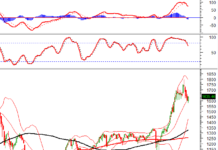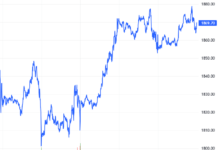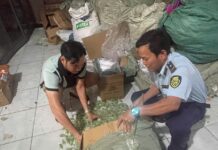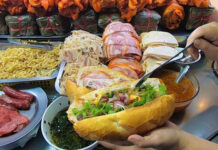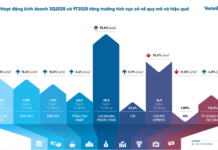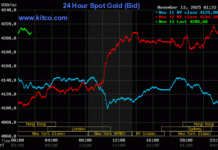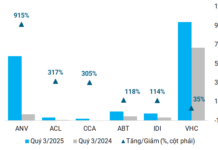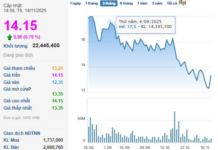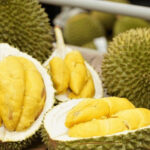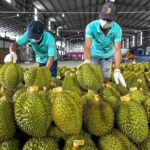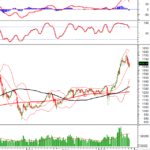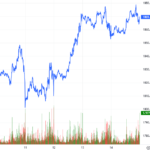Recently, the Police Investigation Agency for Corruption, Economy, and Smuggling (Ministry of Public Security) has initiated legal proceedings and indicted 17 suspects involved in violations related to durian exports.
Addressing Critical Issues
The case has caused a stir among durian farmers and traders due to its significant impact. Speaking to *Nguoi Lao Dong* newspaper, Mr. Nguyen Van Muoi, Deputy Secretary-General of the Vietnam Fruit and Vegetable Association (Vinafruit), noted that the incident exposed several critical issues requiring immediate attention. These loopholes must be closed to prepare for next year’s durian season. Without action, the upcoming harvest will pose significant risks to farmers as production areas and yields increase.
Mr. Muoi identified four urgent issues. First, cadmium residue in durians must be addressed through scientific measures to control it from cultivation. Second, with the ban on yellow phosphorus for preservation, authorities should develop safe alternatives and collaborate with research institutes to support farmers and businesses in processing and packaging.
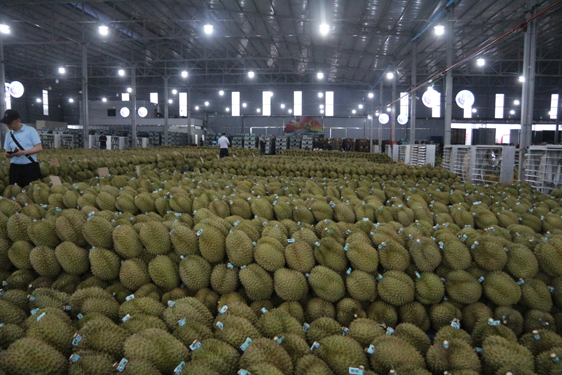
A durian export warehouse in Dak Lak. Photo: CAO NGUYEN
Third, flexible and broader planting area codes are needed for management and export. As China has granted Vietnam control, proactive management is essential to prevent businesses from “trading” codes, which is costly and legally risky.
Fourth, heavy rains have led to underripe durians, compromising quality. Some exporters still ship these, damaging Vietnam’s reputation. “I’ve seen reports on Chinese social media about low-quality Vietnamese durians. Such shipments must be stopped and redirected for processing, not sold fresh,” said Mr. Muoi.
He praised the use of rain shelters in some orchards, which effectively prevent underripening and improve quality, recommending wider adoption.
On testing, Mr. Muoi stressed the need for genuine, non-superficial inspections. Authorities must enhance oversight, leverage technology, and digitize data to prevent fraud, ensuring sustainable durian exports.
Mr. Tran Thien Thanh, Deputy Director of Truong Phat Durian Cooperative (Can Tho), called this a costly lesson for the industry. Illegal code trading undermines trust, harms legitimate businesses, and severely affects farmers. “When shipments are rejected due to fraud, farmers bear the losses. Authorities must act decisively to protect the industry’s long-term interests,” he urged.
Tightening Controls
A leader from Vinh Long’s Department of Crop Production and Plant Protection acknowledged that code trading damages Vietnam’s reputation in China. The province is tightening management, monitoring contracts between businesses and planting areas, and inspecting code usage to detect violations promptly.
Ms. Nguyen Thi Hong Thu, CEO of Chanh Thu Fruit Import-Export Company, noted that China’s market is lucrative but demanding. “Quality control is critical from farm to packaging. Minor errors can lead to rejections, harming national reputation,” she said. Integrated production-consumption chains are vital, ensuring standards are met at every stage to elevate Vietnam’s durian brand globally.
The Department of Crop Production and Plant Protection (MARD) reported issuing 9,207 planting area codes and 1,735 packaging facility codes by mid-August 2025, enabling official exports. In 2025, inspections will intensify, with penalties including code suspension or revocation to ensure consistent quality.
Mr. Henry Bui, CEO of Hoan Vu Science and Technology Company, emphasized the role of testing labs as the “final gatekeepers.” Results must be impartial. “Accuracy is paramount, regardless of external pressures,” he stated. After a tense period, testing has normalized, with Hoan Vu processing up to 100 containers daily during peak season. He advised farmers and businesses to test pre-harvest to address issues promptly.
Growth Potential Remains
According to the General Department of Customs, Vietnam’s Q3 2025 fruit and vegetable exports reached $3.21 billion, up 55% from Q2. Durian exports hit $1.94 billion, a 30.3% increase year-on-year. However, the nine-month total fell 1.7%, indicating growth potential but highlighting quality risks.
Ms. Dang Thi Thuy, Deputy Director of Dak Lak’s Department of Agriculture and Rural Development, noted the province’s 45,000 ha of durian farms, with 26,000 ha harvested in 2025, yielding 390,000 tons (up 30,000 tons). Despite prices dropping to VND 60,000–70,000/kg, farmers remain profitable. Dak Lak has 269 planting area codes and 40 certified packaging facilities for China, mostly authorized to businesses.
“We’re working with authorities and the Dak Lak Durian Association to ensure smooth sales and maintain market stability,” said Ms. Thuy.
Hundreds of Durian Containers ‘Stuck’ at Lang Son Border Gate
At the Lang Son border gate, over 500 vehicles are currently stranded, awaiting customs clearance to export goods to China. A significant portion of these shipments consists of durian fruit, highlighting the growing demand for this tropical delicacy in the Chinese market.

